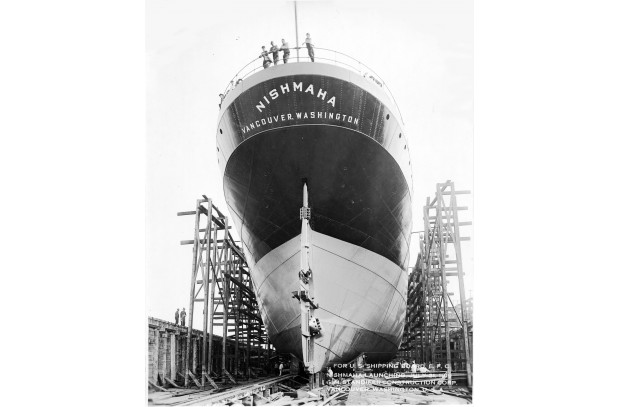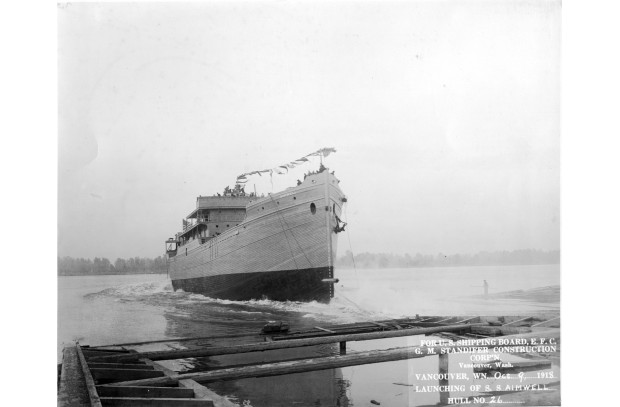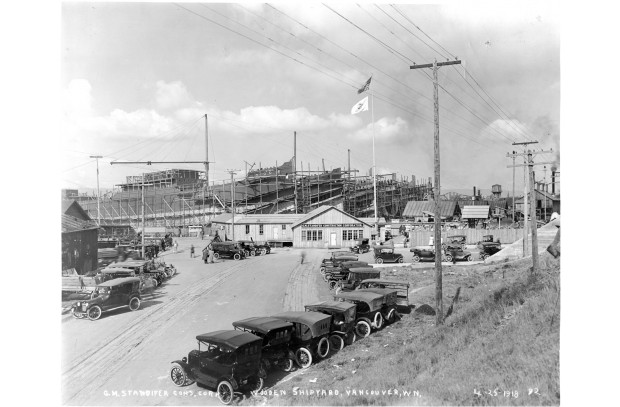Great War Brings Great Numbers
January 16, 1917: $185,000 bond issue to buy property and make improvements at the port is approved, and the United States enters World War I.
The declaration of war led the United States Shipping Board to create the Emergency Fleet Corporation (EFC), the purpose of which was to “acquire, operate and maintain merchant ships for the defense of the United States during war time.” This involved acquiring German ships in U.S. ports, obtaining existing shipyards and capital for the development of new ones, directly affecting Vancouver.
In early 1917, Guy M. Standifer operated the Standifer–Clarkson Shipbuilding Company with James F. Clarkson on the Oregon Slough. After the formation of the EFC, and contracts to build 10 wooden cargo and steel cargo ships each, the company was reorganized into the G.M. Standifer Construction Corporation in order to meet the demand of the contracts. Standifer constructed a shipyard at the municipal dock in Vancouver (today, the site of the Red Lion at The Quay) and began negotiations to construct a steel shipyard. Standifer executives worked with the Port of Vancouver Commissioners in acquiring acreage downriver from the railroad bridge—the steel shipyard opened in 1918.
The two Standifer shipyards jump-started Vancouver’s wartime burst of activity. The U.S. Army built the world’s largest spruce cut-up mill at the military reservation to aid national airplane production, workmen built housing for soldiers and for workers at the Standifer yards, the Motorship Construction Company built government lifeboats, and the Great Northern Concrete Shipbuilding Company built five concrete hulled ships for the U.S. Army Quartermaster department.
Soldiers, shipyard workers and laborers crowded Vancouver, providing lively times for businesses in the midst of war.
« See all stories





